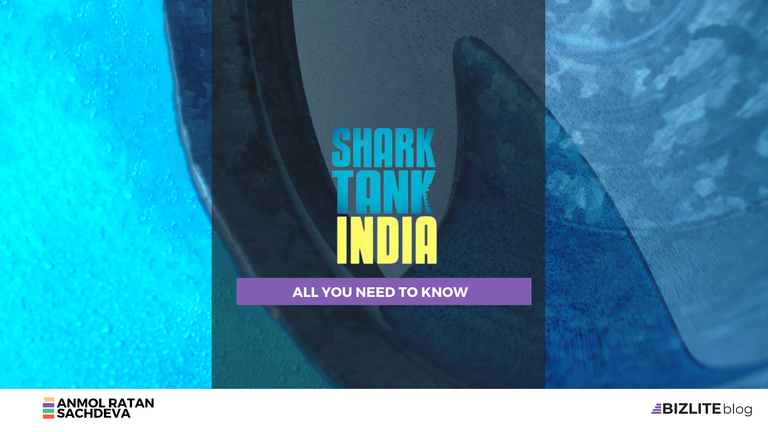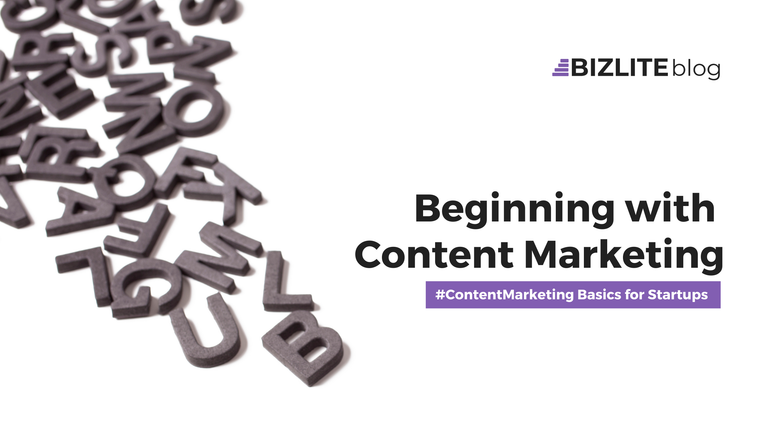How to start a Shopify store in India? [Shopify India FAQs and Startup Guide 2022]
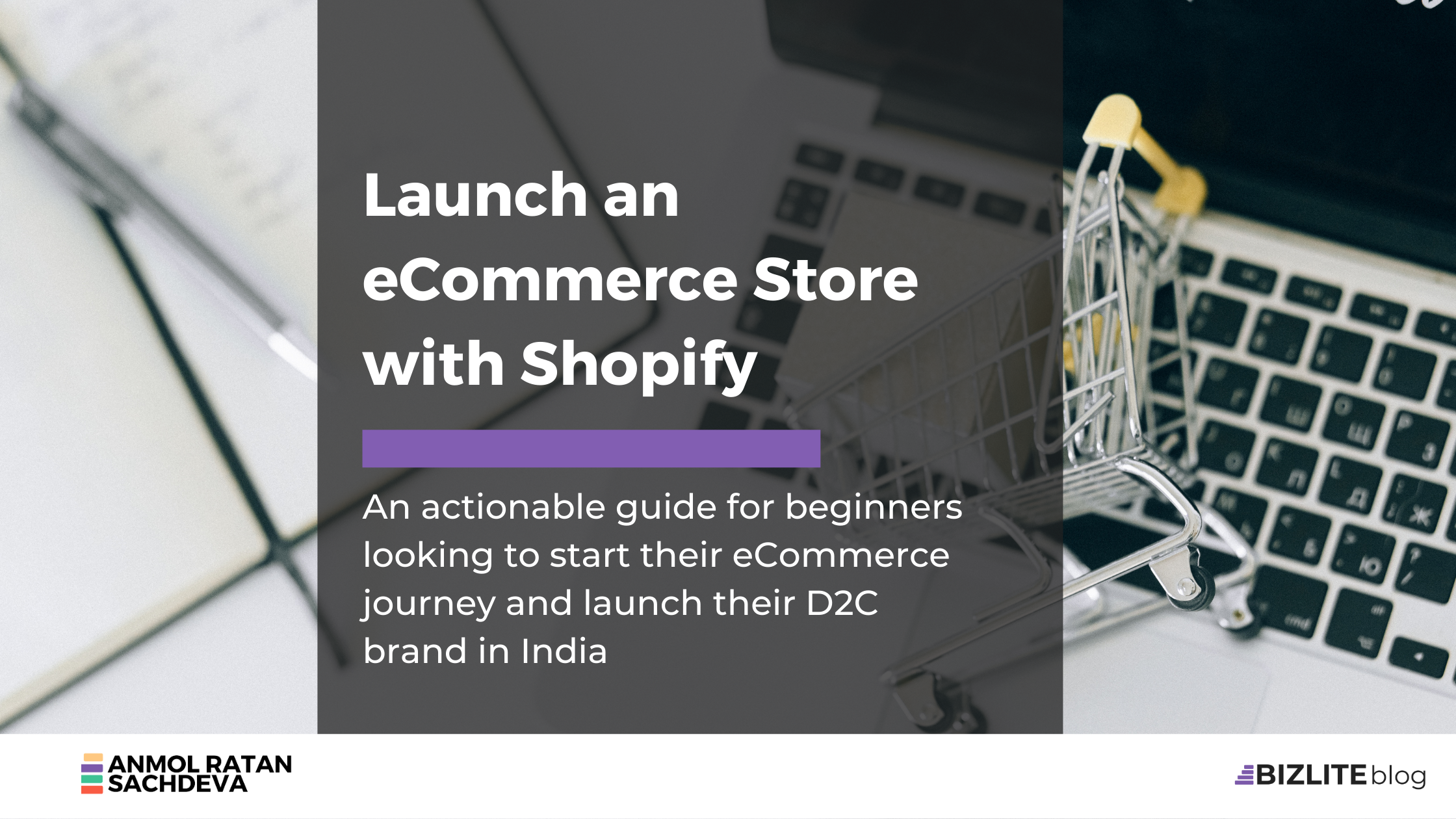
Download this blog as an eBook for free. NO EMAIL Required. Click here to download.
Get a free 14-day trial of Shopify in India & Access 100+ Tools to Help You Start Your Shopify Store. Claim Your Trial + Access on Itara Tools Library Now
Do you remember the last thing you bought? If you're not living under a rock, you would have checked Amazon before buying it.
Amazon is the first thing that pops up in someone's mind when thinking of 'shopping'.
There are more eCommerce stores than ever in 2022. Yet, shoppers are not getting tired of shopping online. Clearly, it's a great time to start a eCommerce store or a D2C brand powered by Shopify in India. Or is it?
Before we head on to Shopify, let's look at a few basics about starting an eCommerce business and Shopify stores in India
This is not an ultimate guide but a ready-reckoner for beginners looking for an easy way to start an eCommerce store with Shopify in India.
Table of Contents
- Things you must know before you start a Shopify store in India
- Starting your first eCommerce store with Shopify
- 3 Things to know before starting an eCommerce Business on Shopify India
- FAQs
- Congratulations! eCommerce is your calling. Start a store, today
- More Resources to Start a Shopify Store in India
Things you must know before you start a Shopify store in India
The eCommerce Opportunity in 2022
Sales on eCommerce stores are expected to explore and cross $6.3 trillion by 2025.
Retail ecommerce sales worldwide from 2014 to 2024 (In billion U.S dollars)

Source: Shopify
The eCommerce opportunity powered by the D2C craze is enormous in 2022. You might have already seen the number of D2C brands featured on Shark Tank India. Most of those startups were COVID babies (launched during COVID-19). And how did so many entrepreneurs manage to launch eCommerce stores from scratch during the lockdown?
The best thing about modern times is that everything is available online, even information and resources. People who wished to launch their startups got the time in COVID-19 to launch their stores. Google served as their genie - providing information in blog posts, and a solution like Shopify helped them tackle the 'tech challenge'.
With so many D2C brands launched in the last three years, you might think, does it make sense to launch an eCommerce store in 2022?
Don't worry - we're a country of 1bn+ people, and potential customers are always looking for stores online.
You can see from Google Trends Graph that the demand for online shopping has been steady through the last five years.
Now that you know it makes sense, let's look at some fundamental aspects of launching an eCommerce store in India.
Finding a great idea for a D2C brand, Shopify store or a small eCommerce business in India?
If you're serious about starting an eCommerce business in India, you would need a great business idea. Greatness doesn't mean something you've been thinking about for some time now.
Instead, a great eCommerce idea caters to a large audience. For example, newborn parents keep searching for deals on diapers for their toddlers. A service that sends them diapers at a monthly discount is a great idea. Why? Because there's ready demand and no stiff competition.
But how do you find an excellent idea for a small eCommerce business in India? Well, there are always tell-tale signs on websites you visit daily. Let me explain.
Facebook and Instagram Ad Library
You must have seen 30 ads on Instagram, Facebook, YouTube, and Spotify since morning. But did you realize you can use these 'intrusive' ads as research?
Yes! You can take cues from Facebook and Instagram ads of other eCommerce businesses to get inspiration for your business idea.
Here's how you can start:
- Head over to Facebook Ads Library
- Select your region as India and category as all ads
- Input your base keywords (the eCommerce idea you're thinking about)
In a few seconds, you'll come across hundreds of ads by eCommerce and Shopify stores in India that are running ads on Facebook and Instagram. Now, carefully look at ads and pick the ones that interest you.
Copy their URL and visit their pages to see what others say about those brands. That will give you ample inputs to refine your idea (and even pick an eCommerce idea). This isn't a full-proof way, but a great way to start when you're confused about an idea.
Amazon Movers & Shakers List
If the last idea to find a niche for your eCommerce store wasn't appealing, let's head over to the world's largest eCommerce store.
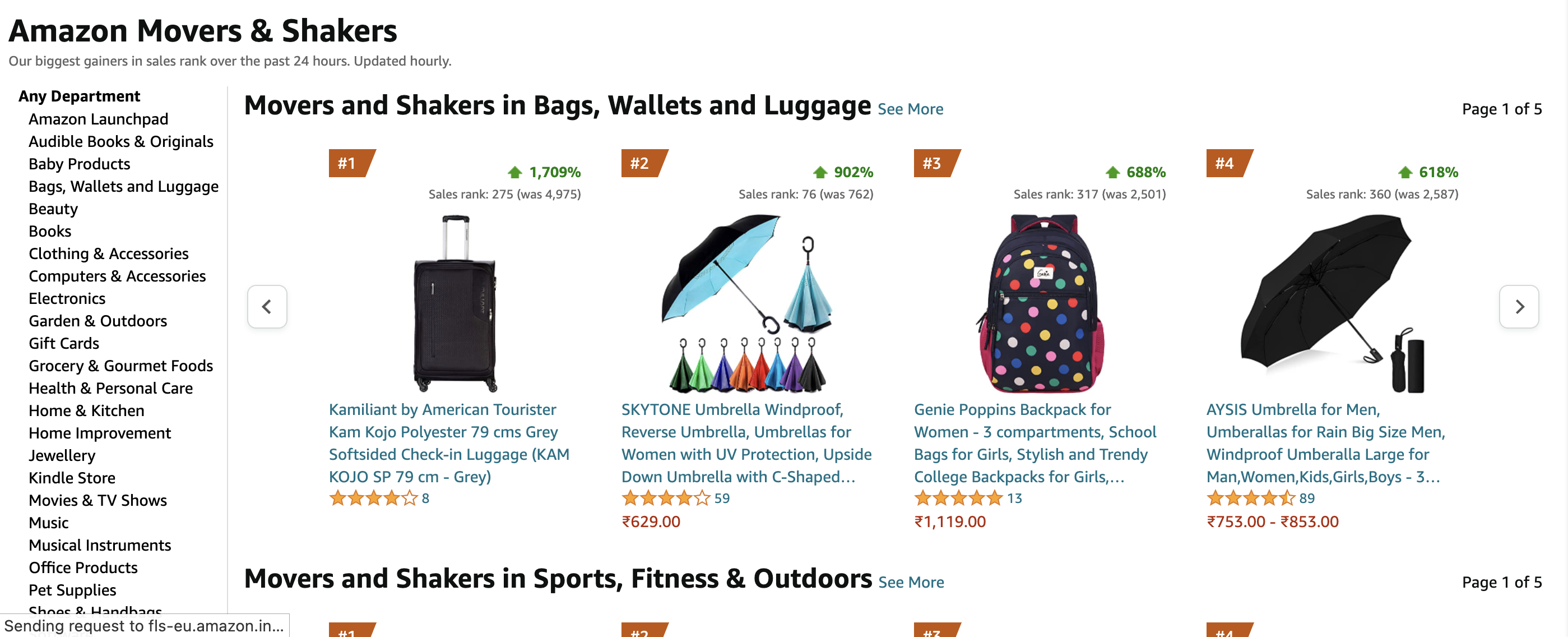
You must have browsed Amazon hundreds of times, but did you know Amazon updates its 'best selling' and 'latest gainers' list every 24 hours. This is called the 'Movers and Shakers list.
Movers and shakers are those products that have been bought maximum times in a particular period. You can use these insights to find out more about the demand for a product or niche.
Head to the Movers and Shakers list on Amazon and see if you can hit 'the jackpot'. You can also look at the user reviews of the products, take notes about what people missed, and create a better product line.
Similarly, you can use the bestsellers list to create new collections for your existing eCommerce business in India.
Your local stores and market
Have you ever been to your local shop only to discover that it's always short on the stock of a particular commodity?
Well, that's a potential insight for you.
Lest the shopkeeper bhaia is lazy to restock, it tells a lot about the demand for a particular product (or category).
You can use this tactic to discover great products that work in your region. But beware, don't just jump in on a product idea just because your favourite shop is always out of stock.
Do a random sampling of 10, 20, 50, or 100 shops in your area to validate the demand for a particular product. You can even talk to your friends in other cities and ask them for help to validate the demand.
If, during this process, you come across one or two products that are always short on stock (mostly products by big brands are short on stock, seasonally), you can launch your own range of products in your category. The lack of availability and high demand will help you capture customers easily in a region. Plus, you will already know which regions to target when running ads for your Shopify store in India.
Still looking for inspiration? Also Check Out
- Successful Shopify stores in India
- Free Shopify Resources (with Big list of Business Ideas)
- Picking the Right Product for Your Shopify Store [Complete Process]
Choosing the right platform for Your eCommerce Store
With the startup revolution in full swing, it is now not hard for anyone to launch their eCommerce startup.
Platforms like Shopify & WooCommerce allow anyone to launch an eCommerce store without spending a lot of time on setup.
Here are some eCommerce platforms that you can explore:
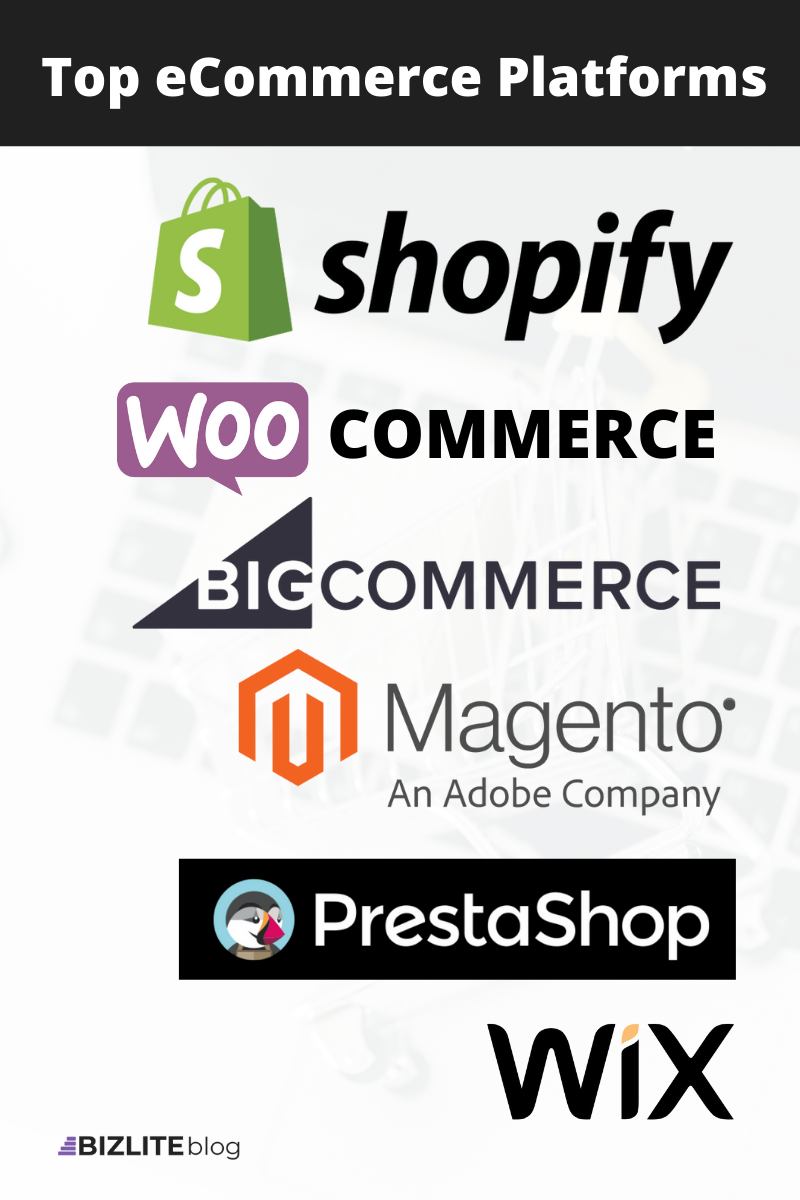
If you're an early-stage startup or a first-time entrepreneur with a small team or a business thinking to transition from offline to online, Shopify is your best bet.
With an easy-to-configure and use interface, Shopify wins over its competitors, giving a startup, offline business or small team access to everything they need for launching their online business.
Read More: Top Shopify Alternatives in 2023 (Including Lifetime Deals)
Successful Shopify Stores in India
If you google top Indian Shopify stores or the list of Shopify stores in India, you'll realize there are thousands of Shopify customers running their D2C brand on Shopify. In fact, there are many successful brands that started as Shopify stores in India and went on to rule their respective categories and even be featured on Shark Tank India.
Starting your first eCommerce store with Shopify
Shopify is one of the largest eCommerce platforms used by more than 8 lakh merchants worldwide.
Growth of Shopify Merchants Globally
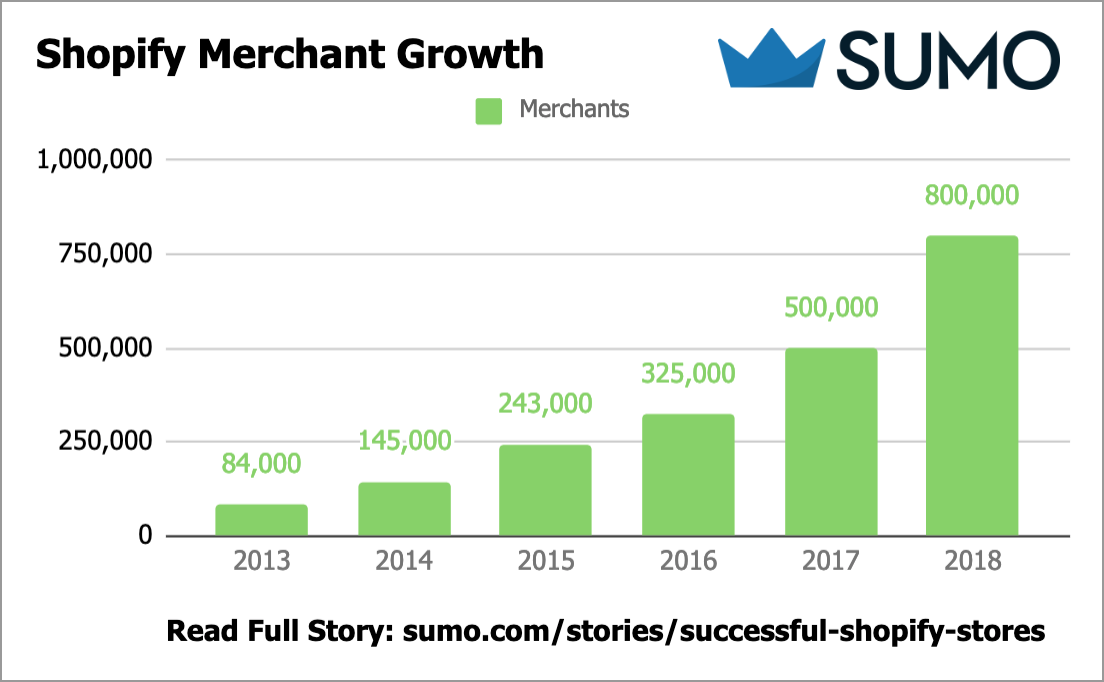
Source: Sumo
With so many merchants relying on Shopify, you needn't worry about the platform's reliability. In fact, it's better, you'll have all the support and ecosystem to start a business on Shopify right away. So, if you're planning to start a small eCommerce business in India, just follow the following steps to launch your first eCommerce website using Shopify
Choose your store name and pick a domain
The first step that will define your brand identity is choosing a name for your eCommerce store after you've collected all the product ideas.
While many first-time solopreneurs think that a registered business name should be the store name, it's not mandatory.
You can have a different store name than your legal business name. Think of it like a brand name - something people will recognize you from. Almost all famous eCommerce stores use a different brand name (different from their company name).
You can use this free tool by Shopify to think of your first eCommerce store name. While you are thinking of your first store name, make sure to keep the following in mind:
- Keep it short and simple
- The store name should be easy to remember and spell
- The store name should be distinguishable and protectable (Don't copy others)
Once you have squared in on a brand name, it is time to buy a domain name for the store. It will be your address on the web. So, choose one wisely.
You can buy a domain from any domain name provider like Namecheap or register the same through Shopify.
Free tools by Shopify to help you pick a domain name & slogan for your first Shopify store
- Free Shopify Slogan Maker Tool
- Free Business Name Generator for Shopify Stores
- Free Domain Name Generator for Shopify
Find more free tools by Shopify here.
Sign Up for a Shopify Account
As said earlier, launching an online store has become easy with time. No longer are you required to invest in a dedicated development team or hardware like servers to start your e-store.
To begin, you should head over to the Shopify. Here is how to get started:
- Visit to www.shopify.com
- Click on 'Start your Free Trial
- Enter your store name (Decided in the last step)
- Click on Create Your Store
- Shopify will ask for some personal details (Email address, name, address, etc.)
After you sign up, Shopify will take care of everything at the backend and get started with bringing your store to life.
Pick a Theme
After the signup, you will be presented with the Shopify dashboard. The first thing you should do is to finalize your store theme.
You can think of a theme as a pre-designed visual set that serves as a template for you. Choosing a suitable theme is crucial for making a great looking store.
Go to themes and click Shopify Theme Store to choose a store theme.
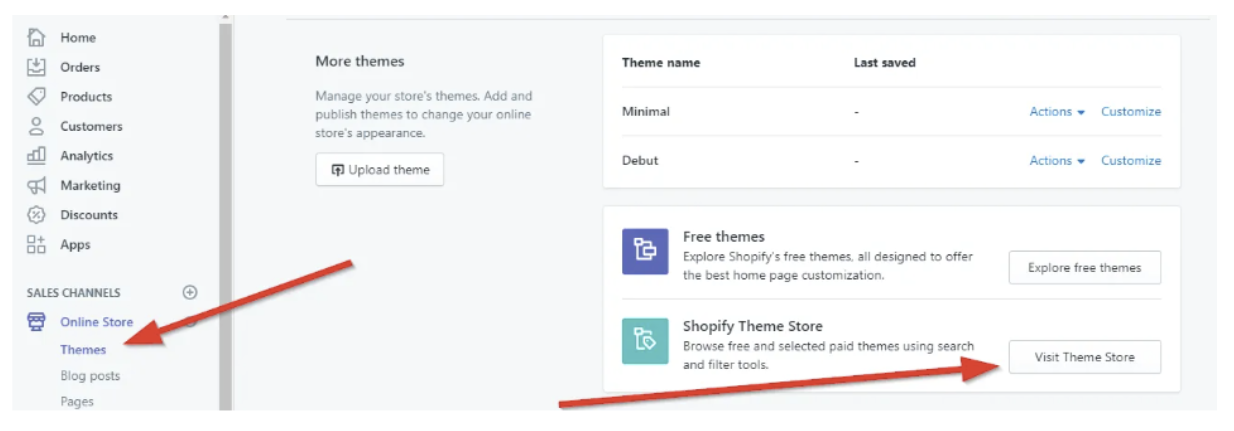
Shopify theme stores have multiple options (both free and paid). You can select one that suits your brand identity and the purpose of your store.
After you've finalized a theme, click on the 'Start with this theme' button to customise your theme.
Configure your Store
By the time you finalize the theme, you have a standard store to start tweaking according to your business.
At this point, you will have to start adding your brand essence and configure other business details.
Start by customizing the theme you selected in the previous step. Go to Online Store - > Themes -> Customize theme to get started.
You will find options to change your store's header, body, and footer under the section. Check out everything and customize the sections according to your business.
- Add a Store Logo: Upload your logo to the Shopify store. (Use Hatchful by Shopify if you don't have a logo to create one)
- Configure Store Settings: Once you're done customizing the aesthetics, you will have to focus on other essential aspects of your store. For your store to be fully functional, you will have to:
- Add a payment gateway to your store (Shopify Payments, Razorpay, Paypal, etc.)
- Update your shipping information (Add/Delete Shipping Zones, Update Shipping Rates)
- Set your billing information (for Shopify to charge you for your store. You would be charged after the end of your trial).
You can find all these in the Store Settings within Shopify.
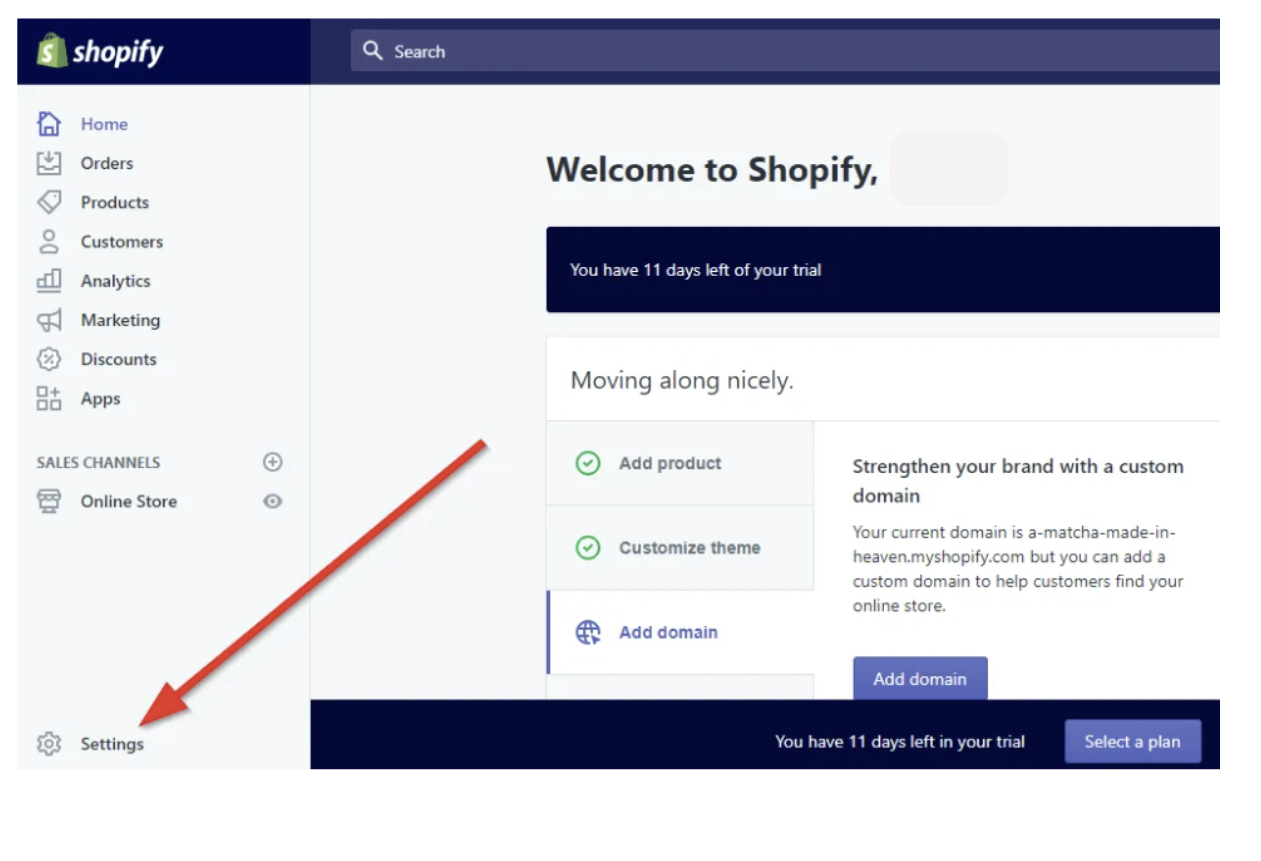
Add Standard Pages to the Store
Now that you have sorted the basics let's get started with things that will matter for the success of your store.
Once the store is configured, you will have to plan and execute the process of adding some standard pages to your store. Things like who you are, how customers will contact you, your terms and conditions, privacy policy and more.
Before you launch your store, check if you have at least the following pages in place:
- About Us
- Contact Us
- Terms & Conditions
- Privacy Policy
- Returns Policy
- Shipping & Delivery Information
Psst... you can use Iubenda to create privacy policy, T&C and make sure your eCommerce store is GDPR compliant.
To create a page with Shopify, click Online Store -> Pages -> Add a Page.
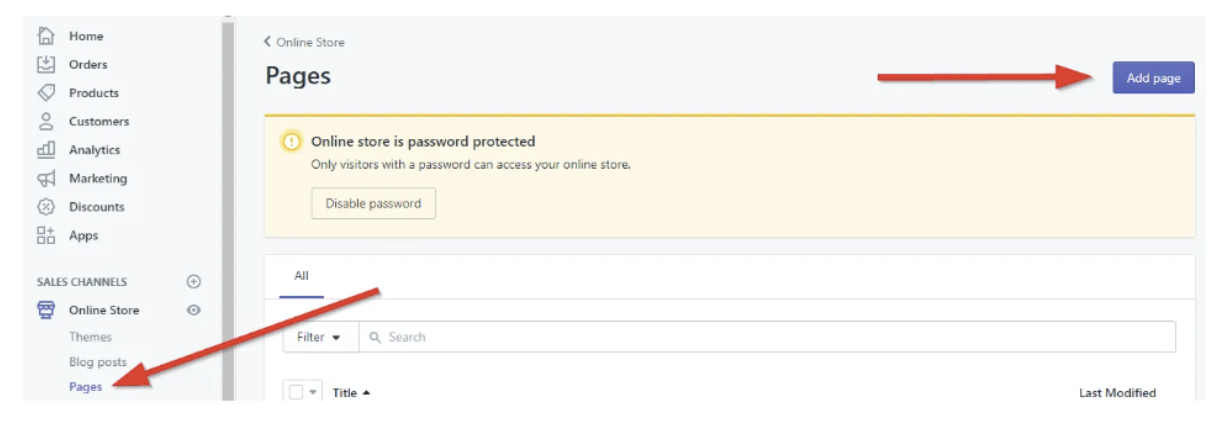
Make sure to add meta title and description for every page. This will help search engines (like Google & Bing) understand what the page is about and help with SEO. To do so, go to 'Preferences' under 'Online Store'.
Also, spend some time on content/copy for everything in your store. This is essential to keep potential customers engaged and boost your conversion rate.
Add Products to Your Shopify Store
Now comes the most crucial part – adding your products to the online store.
If you have the images ready and descriptions in hand, product addition can be as smooth as butter. So, it is suggested to have all the information at hand before you start adding products.
To add a product, go to 'Products' -> Add product.

You will have to fill several columns on the next screen. Particularly, you will have to take care of:
- Product Title & Description
- Product Images
- Set Product Type, Vendor, Collections and Tags
- Set a price
- Inventory status
- Shipping information
- Variants
- Meta Title & Description for SEO
Once you add one product, you can start creating collections to group similar products based on type or tags. For example, if you are an apparel store owner, you can club products under the 'T-Shirts', 'Jeans', 'Winterwear', 'Summer Collection', etc.
You can also import products from other platforms or use your existing data to populate your Shopify store.
Add Shopify Apps to Your Store
Once you've added all the products for your store, you can practically move ahead with marketing your store and bringing in traffic.
But let's hold on a bit and explore the Shopify App Store. It is one of the biggest eCommerce app stores and has apps to simplify your store management, marketing, customer relationships, and more.
Not leveraging Shopify apps can harm you in a highly-competitive D2C eCommerce industry. Here are some of the apps you can consider adding to your store:
- Sumtracker: Automate Inventory and Order Management
- Segundo: Run Email and Online Marketing Campaigns
- Smile: Rewards & Loyalty Program Management
- Push Owl: Send Push Notifications to Users Who Abandoned the Cart
3 Things to know before starting an eCommerce Business on Shopify India
If you came here searching for the process to start a Shopify store in India and are committed to starting a business on Shopify, congratulations. You've taken the first step already. Now, all you need is to keep acting on your will to start a Shopify store.
There are thousands of successful eCommerce business ideas in India that you can succeed at. But before you square-in on a single idea and start a small eCommerce business in India with Shopify, remember these important tips:
Shopify has increased eCommerce competition in India
If Shopify's ease of use and simplicity for starting an eCommerce business in India has appealed to you, remember, others are equally appealed, too. Since the day Shopify launched in India, lakhs of business owners have launched their eCommerce businesses.
According to BuiltWith trends, there are more than 35,000 Shopify stores in India, which includes bestselling Shopify stores, Shopify websites, Shopify dropshipping stores, etc.
You can check BuiltWith for full information about the best Shopify stores in India for your niche and understand the competitors you're dealing with.
But don't worry, there's a silver lining here, too. We're a country of more than one billion, and even if the data is only 10% of the actual Shopify users in India, there's still room for more stores. So, you can pick up a low-cost business idea in India and use Shopify to launch an eCommerce store even in 2022.
Shopify isn't only for startups and business owners with tech background.
If words like 'eCommerce', 'product catalogue', domain names, hosting, etc., have overwhelmed you as a small business owner in India, keep calm.
Shopify isn't just for tech-savvy entrepreneurs. In fact, a large number of users who create stores and buy on Shopify India come from Tier-II & Tier-III cities, like Jhaji Store which we saw on Shark Tank India.
Read More: 20+ Successful Shopify Stores in India
eCommerce usage and adoption in small cities and towns even outpaced metro cities in 2021-2022. And a majority of these users aren't startups. In fact, Shopify in India isn't positioned to help startups but small business owners.
Don't believe me? Here's a blog on the benefits of using Shopify as a small business owner. If you don't want to navigate from this page (thank you for that), here are some reasons:
- Shopify has dedicated support for premium users. You can ask all your questions quickly
- There are detailed guides that can help anyone start a Shopify store in India
- The interface is self-explanatory, and you don't need to go anywhere else to launch your first store
- Shopify supports local languages. Though Hindi isn't supported yet, but might soon include the same
- Your customers already buy on Shopify India from other eCommerce and dropshipping businesses.
Shopify can get expensive for first-time entrepreneurs without a clear plan
If you think Shopify plans in India are costly, wait until you understand the real dynamics of running an eCommerce business in India. Shopify is a SaaS tool, and as Indians, most business owners are aversive to monthly costs. Top it up with the mistakes people make as first-time business owners in India.
So, you're destined to waste some time (and money) in the process. If you're planning to start an eCommerce business as a Shopify store in India, understand that you'd have to pay every month, irrespective of the sales you register.
Shopify India Pricing Plans
- Shopify India Starter Plan: Starts at INR 399/- per month
- Shopify India Basic Plan: Starts at INR 1499/- per month
- Shopify India 'Shopify' Plan: Starts at INR 5990/- per month
- Shopify India Advanced Plan: Starts at INR 22680/- per month
While the basic Shopify plan in India starts at just INR 1499/— a month, realize that you will also have to spend on ads, shipping, packaging, and admin tasks. Its always better to have a solid marketing plan for your eCommerce store before signing up.
Read More:
- Shopify India Pricing Plans - Cost of Launching a Shopify Store in India
- Top Shopify Alternatives - Lifetime Deals for 2023
So, only start a Shopify store when you're done planning and have a long-term vision to break even on the cost of starting your Shopify store in India.
Get a free 14-day trial of Shopify in India & Access 100+ Tools to Help You Start Your Shopify Store. Claim Your Trial + Access on Itara Tools Library Now
FAQs
How much does it cost to start a Shopify store?
The basic plan for Shopify starts from USD 29/month. That should be enough, to begin with. You will also have to spend money on the domain name (.com domains on Namecheap start from INR 75 only). Other costs might include the cost of goods, staff, marketing, etc., just like any other business. Read more about the actual costs here
How to start a Shopify store with no money?
You cannot start a Shopify store with no money, at present. But don't worry. Shopify has a Free 14-day trial to understand how to start an eCommerce business with Shopify. If it works for you, pick up a paid Shopify India plan. Or you can choose to go with WooCommerce+WordPress (both are free to use, initially). Shopify also runs discount offers and promotions from time to time (Its last big promotion was during the start of COVID-19, where Shopify allowed people to start a Shopify store with no money and operate a store for three months, straight.
How much can you earn with a Shopify Store?
The top sellers and brands on Shopify earn at least $72 per customer in the USA. The earnings from other countries can vary. For the Indian market, you can expect to earn a margin of 30-40% after accounting for all the expenses. Check the detailed revenue/earnings report for Shopify sellers for different countries here.
How long does it take to set up a Shopify store?
The best thing about Shopify is that you don't need to spend much time to get a decent eCommerce store. Getting the final result (a functional Shopify Store) would take at least 15-30 hours. However, it would take several hours a week to optimize, improve and grow your store.
What is the best product to sell on Shopify?
You need to do market research to understand what sells on the internet. A quick way to do so is to check Aliexpress dropshipping ideas websites. (search for these terms on Google) and you will get several product/niche ideas. Here's a complete guide on choosing the right products for Shopify
Can I hire someone to build a Shopify store for me?
Yes. There are many of platforms, developers, and experts who offer Shopify development services if you want customization. Toptal is a trusted talent marketplace where you can find top-rated Shopify developers for hire. Toptal is popular among large organizations and early-stage startups alike for consistently delivering positive outcomes. You can check the link to find Shopify experts matching your requirements.
Congratulations! eCommerce is your calling. Start a store, today
That's it. You'll have a fully-functional eCommerce store on Shopify by the end of this step. You can start marketing your store on social media platforms/social networks like Facebook (Facebook Groups/FB Ads) or Google Adwords.
Looking for inspiration to start your first Shopify store? Here are 20 successful brands using Shopify to kill it in D2C & eCommerce space in India.
There are several other marketing strategies to grow your Shopify store that I will be covering in the coming months.
Meanwhile, read this blog on 5 tools you would need to run your eCommerce business in India. All the best!
More Resources to Start a Shopify Store in India
- Free Tools & Resources by Shopify: Everything you need to launch your first Shopify Store in India
- Shopify: Make your own eCommerce store for D2C brand
- Free Shopify Tools: Free tools like business name generator, slogan maker, logo maker and more.
- Namecheap: Buy domain names at an affordable cost
- Hatchful by Shopify: Shopify's own logo maker
- Iubenda: Create Privacy Policies (and other essential pages)
- Sumtracker: Automate Inventory and Order Management
- Segundo: Run Email and Online Marketing Campaigns
- Smile: Rewards & Loyalty Program Management
- Push Owl: Send Push Notifications to Users Who Abandoned the Cart
Follow the link to more resources and essential startup tools you would need when you start an eCommerce business in India. And in case, eCommerce isn't your niche, here are some low-cost ideas to start your business in India.
Download this blog as an eBook for free. NO EMAIL Required. Click here to download.
Get a free 14-day trial of Shopify in India + Free Tools to Help You Start Your Shopify Store. Start Now

